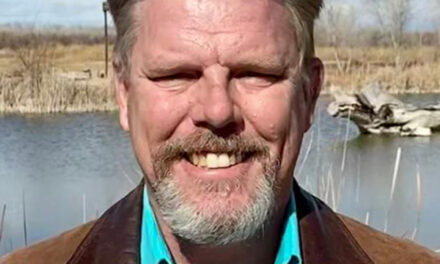People and Places
One of the perks of doing this job is I get the chance to experience things most people won’t.

So when one of the training deputies with the Valencia County Sheriff’s Office asked if I’d like to see what the department’s new virtual reality training system was like, how was I supposed to say no?
With all the nerdy glee a middle-aged woman with a penchant for gaming could muster (which was quite a bit, if I’m being honest) I found myself wandering around the gutted second floor of the Valencia County administration building completely unsupervised.
The stripped-to-nothing former courtroom is nothing to write home about, but has plenty of room for the VR set up, which is a bit under-whelming. Four poles with the VR units set in a square, a black computer tower, a couple of monitors and of course, the clunky, chunky headset.
Oh, and there’s the gun. A replica of a handgun heavy enough and detailed enough to be, well real. It’s not, and anyone in the VR room who typically carries a weapon is required to take it out of their holster, unload it and put it in a container. No one in the training room has a live weapon anywhere near them.
The headset and earphones cut me off from the real world. Since I didn’t have an empty holster for the “gun,” I held it down at my side, arm straight. It was equipped with a sensor that would tell the system when I drew it.
Since I was completely blind to what was around me, a safety officer was inside the sensors. I couldn’t see him with the goggles on but I could hear him to some extent if he spoke loud enough.
The world starts in a large room, with lots of marble and glass. The sun is setting over a generic cityscape. It honestly vibes like a super villain lair.
There are three dummies in front of you and that’s where you get a feel for your virtual weapon. When you pull the trigger, you hear the gun fire in your ears but there’s no recoil. Dust and debris flies off the dummies when you shoot them.
Then the call goes out over the radio. Dispatch tells you there’s a man on the bridge threatening to jump; unknown if he’s armed. The scene fades in and I’m on a bridge, at night. A man is standing near the railing. We begin to talk. I ask his name. He tells me everyone is going to die. There is something in his right hand. It’s hard to see what exactly.
He takes a couple steps towards me and I see it’s a knife. I bring up the gun, finger on the trigger and tell him to stop. He did. We continue talking. He says he needs help. That’s OK. We all need help sometimes.
I convince him to drop the knife, backs away from me and get on his knees. It’s a win.
The second scenario I did twice. A shirtless man on the street, yelling profanities and threatening people. He’s armed with a pipe. The first time he ran at me, he got within 5 or 6 feet before I shot him. The second time, the instructors had one word for me — distance. The second time, I shot sooner.
When I get the opportunity to do things like this, these behind-the-scenes experiences, I always learn something new. It’s always very interesting and kind of cool.
In this case, I gained a small bit of insight into what officers experience in real life. Things aren’t always cut and dry. Sometimes there isn’t a “right” decision.
More importantly, it solidified my opinion that there’s no such thing as too much training. Not that they should be scripted robots, but training is what keeps a person from reacting out of that fight or flight place all our brains go.
Training gives officers the skills to “read the room” and react appropriately. Does this mean I’m going to think every time an officer shoots and kills a person, it was done appropriately? Absolutely not.
It means I’ll be prone to ask how much training they had, what kind and when was it last done?
As one of the instructors noted, 99 percent of the time officers don’t necessarily need their “warrior brain.” They need to be able to switch it on when needed, then off again, to remain human and a part of our community.
Julia M. Dendinger began working at the VCNB in 2006. She covers Valencia County government, Belen Consolidated Schools and the village of Bosque Farms. She is a member of the Society of Professional Journalists Rio Grande chapter’s board of directors.
















